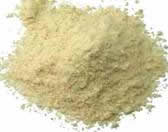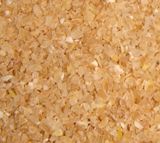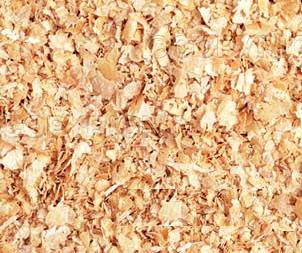PROCESSING
MILLING OF WHEAT
Wheat is consumed mostly in the form of flour obtained by milling the grain while a small quantity is converted into breakfast foods, such as wheat flakes, puffed wheat and shredded wheat.
The traditional procedure for milling wheat in India has been stone grinding (chakki) to obtain whole meal flour (atta). This method results in a 90-95 per cent extraction rate flour which retains almost all the nutrients of the grain while simultaneously eliminating that part of the grain which is most indigestible like cellulose, and physic acid which binds and carries away minerals.
In modern milling, wheat is first subjected to cleaning to remove various types of impurities together with damaged, shrunken and broken kernels which are collectively known as ;screenings’. Impurities that adhere to the grain are removed by washing or by dry scouring which loosens the impurities which are then blown away by an air current. Next, the cleaned wheat is subjected to conditioning.
Finally, the cleaned and conditioned wheat is subjected to milling to separate the endosperm from the bran and germ, and to reduce the endosperm to flour fineness to obtain the maximum extraction of white flour from the wheat. The reduced endosperm is known as flour (white flour) and the germ, bran and residual endosperm obtained as by-products are used primarily in animal feeding.
BY PRODUCTS OF WHEAT
Whole wheat flour
The bran and germ are separated in making white flour or maida. Maida bakes more uniformly into a loaf of a greater volume and it is more bland in taste and more easily digested. It can be stored in an airtight container in the refrigerator.
Maida
It contains the finely ground bran, germ and endosperm of the whole kernel. Whole wheat products have a distinctive flavour and coarser texture than those made from white flour. Because of the higher fat content of the germ, whole wheat flour is more difficult to keep and sometimes becomes rancid in storage under poor conditions. |
Semolina
It is coarsely ground endosperm and its chemical composition is similar to that of white flour. It is used in the manufacture of macaroni products. It is roasted before storing to save it from insets and worms.
Wheat bran
It increases the stool weight by increasing the water holding capacity of the bran. Wheat bran prevents constipation and may lower the risk of colon cancer
Glutamic acid: It is derived from wheat. A familiar compound of glutamic acid is "mono sodium glutamate", a salt like product generally available and used to bring out the flavour of other foods or seasonings. |


|



